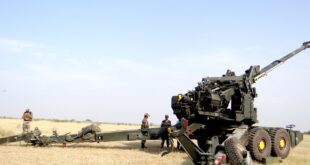
Archaeologists have discovered a 41,000-year-old ostrich nest in Prakasam, Andhra Pradesh, which is considered the world’s oldest known ostrich nest.
Megafauna:
- Definition: Megafauna refers to animals weighing over 50 kg. The term was first coined by Alfred Russel Wallace in 1876.
- Classification: Megafauna are categorized as megaherbivores, megacarnivores, or megaomnivores based on their diets. Ostriches, weighing between 90-140 kg and standing 7-9 feet tall, are classified as megaomnivores.
Co-evolution Hypothesis:
- A study by Yale and the Smithsonian’s National Museum of Natural History in 2020 suggests that the extinction of large animals in India began around 30,000 years ago, coinciding with the arrival of humans.
- This supports the “co-evolution hypothesis,” which proposes that the resilience of fauna to extinction may have resulted from coevolution with hominins (humans and their relatives).
- Geographic isolation and environmental changes may have accelerated extinction.
Previous Evidence of Ostriches in India:
- 1884: Richard Lydekker discovered evidence of the extinct Asian ostrich (Struthio asiaticus) in the Dhok Pathan deposits of the Upper Siwalik Hills (now in Pakistan).
- 1989: Archaeologist S. A. Sali found ostrich eggshell beads and engravings (50,000-40,000 years old) at an Upper Palaeolithic site in Patne, Maharashtra.
- 2017: Researchers from CCMB in Hyderabad identified ostrich presence in Rajasthan, Madhya Pradesh, and Gujarat 25,000 years ago through fossilized eggshells linked to continental drift from Gondwanaland.
About Ostriches:
- Description: The ostrich is a flightless bird and the world’s largest avian species.
- Habitat: They inhabit the savannas and desert regions of Africa.
- Diet: Ostriches derive most of their hydration from their plant-based diet.
- Speed: Ostriches are exceptional runners, capable of reaching sprint speeds of up to 43 miles per hour.
- Social Structure: Ostriches live in small herds, typically fewer than a dozen birds, led by alpha males who mate primarily with the dominant hen.
- IUCN Status: Least Concern.
 Chinmaya IAS Academy – Current Affairs Chinmaya IAS Academy – Current Affairs
Chinmaya IAS Academy – Current Affairs Chinmaya IAS Academy – Current Affairs
